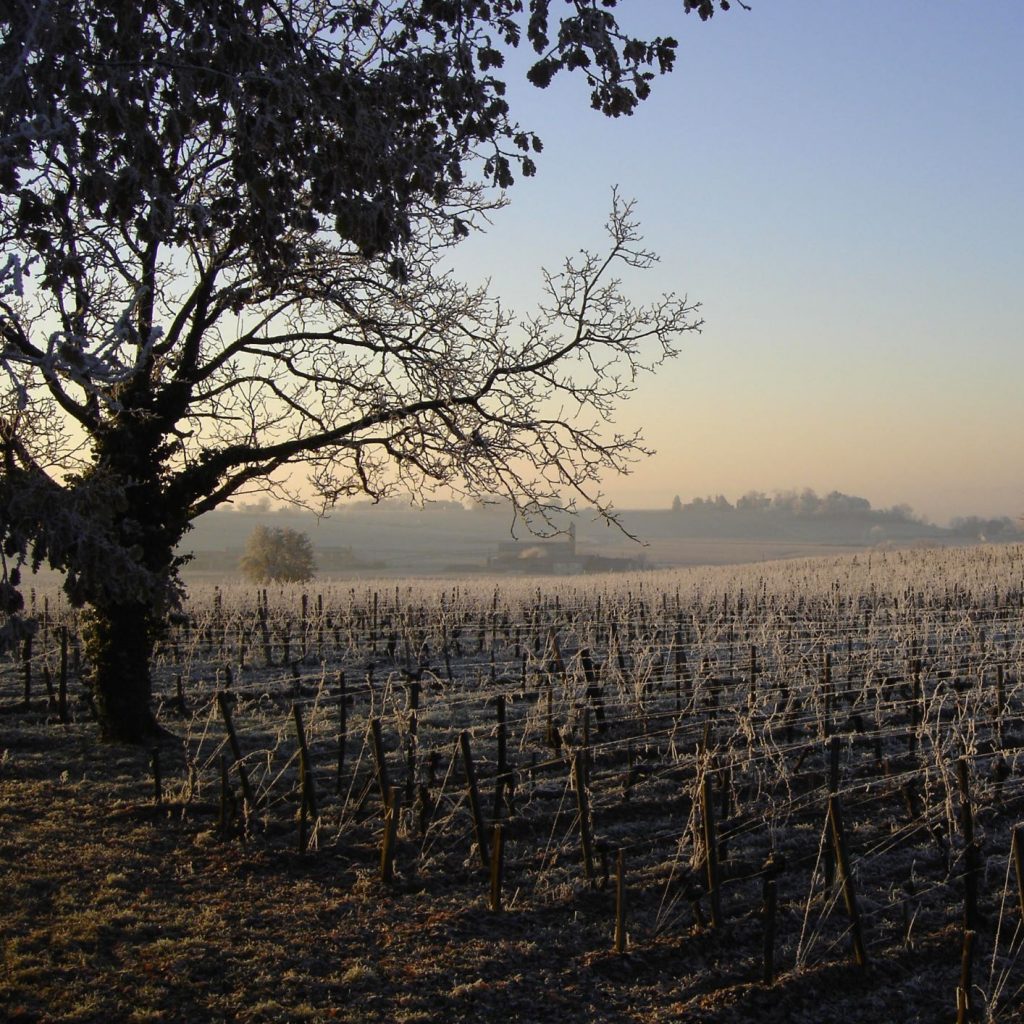France and the frosts
Author: Barbara Drew MW

No doubt you have seen some of the evocative images coming out of France in the past week; dark vineyards with rows of candles burning between the vines; dawn breaking on plants encased in ice.
As flurries of snow continue to fall in the UK, it is a reminder that, though spring is here, frosts are still a real risk. Those that have hit French vineyards are some of the most severe for 40 years.
Spring frosts and budbreak
In vinous terms frosts – where air temperatures at ground level dip below zero degrees Celsius – are most dangerous in spring. During the winter, vines are dormant, looking like nothing more than gnarly trunks with dead sticks on them. When dormant, vines can survive temperatures as low as -15oC with minimal damage.
However, once budbreak has happened, temperature becomes much more important. At budbreak, tiny buds, followed by delicate leaves and shoots start to appear on the vine. If temperatures dip below freezing, and stay there for any length of time, the water in the capillaries will freeze, causing huge damage to the tender new growth.
This damage is often magnified by bright sunlight – a freezing night resulting in vines and buds being hit by frost, followed by a cold but sunny morning has an effect similar to a magnifying glass on dry turf, with the ice focusing the sun’s rays, and causing a burning effect on those buds and shoots, normally resulting in complete devastation.
Even without that effect, frost will either damage the buds so much that very little fruit is produced, or destroy the buds completely. If vignerons are lucky, secondary buds may appear after the frost to replace those that have been damaged – but these will be fewer in number, and often there is just not time for them to ripen before Autumn sets in.
How the winemakers fight frost
While weather forecasting is accurate enough to predict frost events, there still remains little that vignerons can do to protect their vines. One approach is to sprinkle water over the vines as temperatures drop, providing an ice “jacket” to each bud, and insulating it from any further temperature drops. However, this requires a ready sprinkler system and vast reserves of water.
Most interventions instead aim to warm the air at ground level and around the vines sufficiently that the buds do not freeze. When temperatures are dipping to -1 or -2 degrees for a night or two, this is just about possible, usually by setting up huge candles (bougies) or heaters in the vineyards. In some regions, bales of hay are burnt to generate a little extra warmth for the vines. And of course, if cash isn’t a problem, one can always hire a helicopter. Hovering above a vineyard, the rotor blades stir up the air sufficiently to prevent a frost layer forming.
However, as one might imagine, none of these options (even the candles) is particularly cheap. Once temperatures head down to -7 oC, as they did in Champagne last week, they also start to become less effective. And, of course, none of these solutions is very good for air quality or greenhouse gas emissions in the region.
Climate chaos
Sharp spring frosts have been increasing in frequency in recent years. Even a decade ago, these were rare occurrences. However, we now see each April (and often even later, into the start of May) widespread frost damage in European vineyard areas – and not just those in the north. Vineyards all down the Rhône have been hit this year. Just as with wildfires in California or Australia, what was previously a once-in-a-lifetime severe weather event has become depressingly commonplace, an annual tick on the calendar marking how much weather patterns are changing.
Unfortunately, despite this devastating start to the growing season for so many growers, we can no longer say with certainty that the worst has passed. The likelihood of severe heat events, in excess of 35oC, drought and violent thunderstorms before the growing season is done is once again higher this year than the last.
Time will tell
It is often said that to make a small fortune from a vineyard, one must start with a large fortune. As weather patterns change rapidly, and vignerons deal with severe frosts every year, even this bleak outlook is starting to seem optimistic… But, for this vintage, it is too early to assess the full impact of the frosts.
Max Lalondrelle, our Managing Director of Fine Wine has been in touch with many of our producers. “While the French government has announced it plans to declare 2021 an ‘agricultural disaster’,” he says. “Many winemakers across the country are keen to emphasise it is too early to tell. They are still assessing the full impact of the frosts which varies depending on grape variety and vineyard site.”
The next few days and weeks will be crucial: we wish all of our producers and winemakers well.


